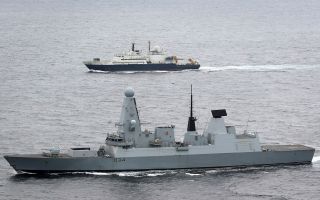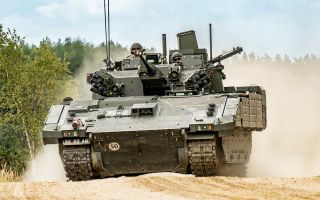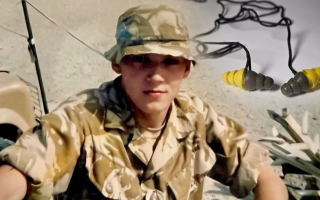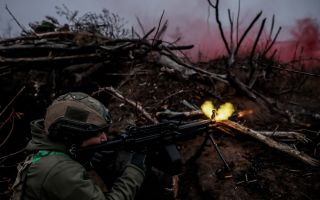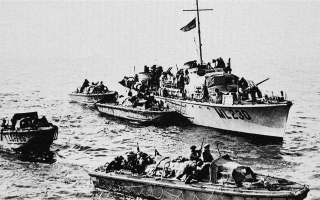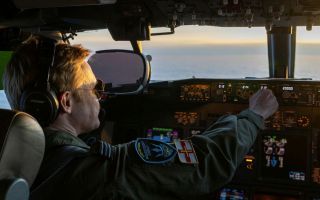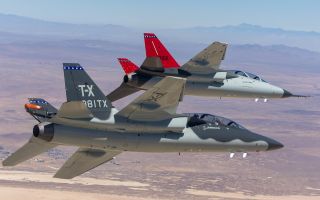
Everything you need to know about US-Russia peace plan to end Ukraine war

A 28-point peace plan, which would force Ukraine to capitulate territory to Russia and would ban the country from ever joining Nato, has been leaked following secret talks between Russia and the US.
This plan, which is reportedly at the framework stage, represents the latest iteration of US efforts to bring an end to three and a half years of conflict between Moscow and Kyiv.
Reports suggest it was drawn up following three days of discussions between President Donald Trump's special envoy Steve Witkoff and Kremlin adviser Kirill Dmitriev in Florida at the end of last month.
The plan is heavily slanted towards Russia's demands and would force Ukraine to significantly reduce its armed forces and permanently relinquish territory illegally occupied by Russia.
Moscow, by contrast, would be allowed to rejoin the G8, re-enter the global economy through the lifting of sanctions.
BFBS Forces News has examined the peace plan and analysed what the key leaders have said in response to the proposed plan drafted by Washington.
What concessions are expected from Ukraine?
The proposed plan sets out several expected concessions from Kyiv as part of a peace deal.
Territory
The first and most significant concession from Ukraine is that the country would have to cede territory.
Under the terms of the peace plan, Crimea, Luhansk and Donetsk would be seen as de facto Russian, while Kherson and Zaporizhzhia's frontlines would be frozen where personnel currently are.
Other territorial measures include Ukrainian armed forces retreating from the area of Donetsk Oblast that they rule, while Russia would have to hand back other territories it controls beyond the abovementioned five regions.
Ukraine's President Volodymyr Zelensky said that he would not agree to territorial concessions last month.
As Kyiv withdraws from current frontlines, the zone will be seen as a neutral demilitarised buffer zone, and Russian forces will not be able to set foot in the area.
Kyiv's military
Militarily, the peace plan outlines that the Ukrainian armed forces would be limited to 600,000 personnel; therefore, Kyiv would have to cut close to 300,000 personnel.
This represents a sizeable chunk of their armed forces, meaning that Kyiv would be restricted if another invasion were to ever happen.
Nato
In addition, Ukraine would never be able to be accepted into Nato as it would have to codify the measure into its constitution. Concurrently, the alliance would have to add a provision that Ukraine could not accede to Nato in the future.
What concessions would Russia have to make?
Ukraine's sovereignty
Among the few Russian concessions are a stipulation that Russia's President Vladimir Putin would have to confirm Ukraine's sovereignty, meaning Kyiv would have authority over its territory.
Russia would also be forced to not invade any other neighbouring countries, such as Estonia, Finland and Georgia, for the second time, while enshrining the protocol of non-aggression towards Europe and Ukraine in law.
Security guarantees
Moscow would have to stomach Ukraine supposedly being given reliable security guarantees, including European fighter jets being stationed in Poland.
Nato's fighter jets are currently deployed on Op Eastern Sentry after Russian drones violated Warsaw's airspace in September.
These "reliable" security guarantees are not defined in the peace plan and do not suggest that they could include the Coalition of the Willing, a group of nations seeking a different peace deal for Ukraine.
The peace plan also does not lay out whether a reassurance force would be deployed to Ukraine.
Mr Putin has said any personnel in Kyiv as part of a reassurance force could be seen as "legitimate targets".
EU membership
Lastly, Moscow would have to concede that Kyiv would be eligible for EU membership and that the country would gain short-term preferential access to the European market during the period when the policy is being discussed.
What has been the reaction to the peace plan?
Mr Zelensky gave a guarded response to the proposals, saying the country needs a true, dignified peace that won't be broken by a third Russian invasion.
"We agreed that our teams will work on the points to ensure it's all genuine," he said in a post on X.
"We're geared up for clear and honest work – Ukraine, the US, our European and global partners."
Meanwhile, UK Prime Minister Sir Keir Starmer has said "the future of Ukraine must be determined by Ukraine".
The talks which brought about this plan involved Russia and the US; Ukraine and Europe were not invited to participate.

